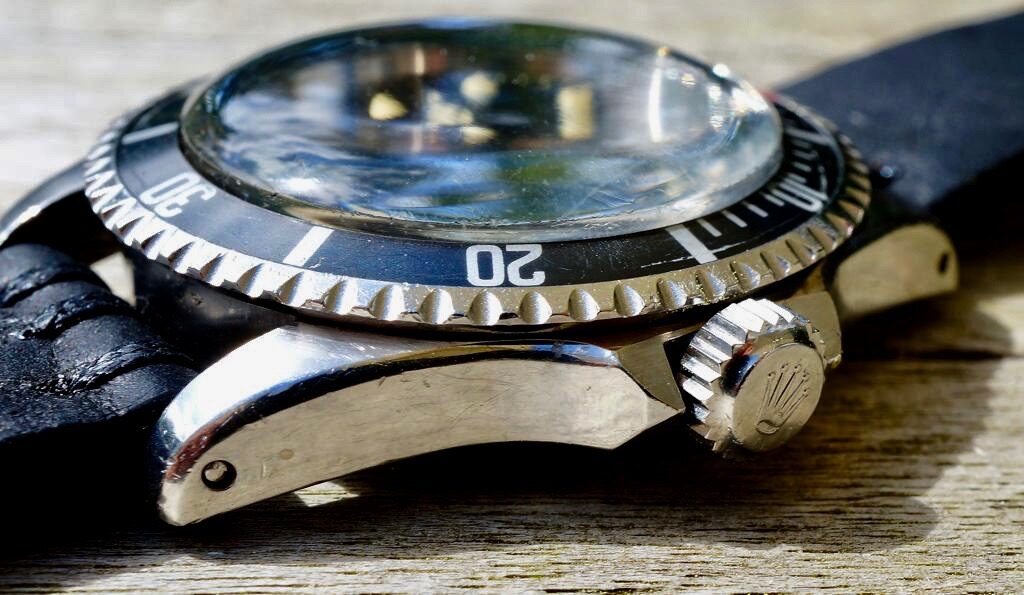What I love most about vintage Rolex is that you really never stop learning.
I recently came across an auction house that has described a Rolex 1675 GMT Master as an Eagle beak example. Now you might think, as I did at first, that the auction house should do their homework better. But they are not entirely without fault. Very early 1675 GMT masters have pointed crown guards or ‘cornino’ as they are called in Italian – and they look like an Eagle beak – I will prove it later.
What is most interesting is that not all pointed crown guards or cornino look alike. Indeed the very early examples look like the Eagle beak, a very rare Rolex Submariner 5512 example.
A good enough reason for a short post on Eagle beak submariner versus Cornino 1675 GMT Master.
Lets start off with the Eagle beak. What is it and why do collectors term the watch this way?
The Eagle beak belongs to the Reference 5512 Rolex submariner, one of the most well known submariner references. The 5512 submariner was the first reference with crown guards within the submariner family and came around 1959. The earliest versions had a square crown guard. Like on the picture below – the watch on the right (the watch on the left has pointed crown guards).

(Credit: Bobs watches).
Square crown guards are very rare and usually found on Rolex serial Nr 478 0xx onwards and from 1959. Below another good picture of the square crown guard.
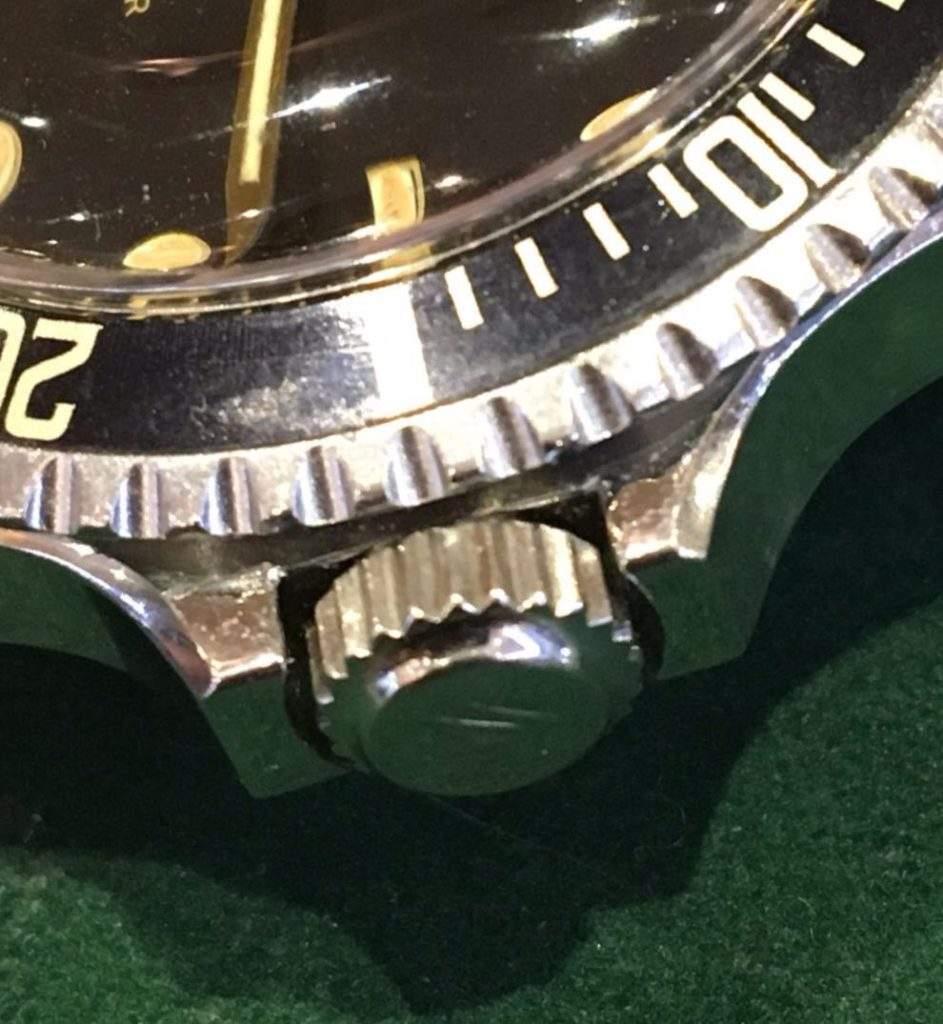
(Credit: Kkevall).
Right after the square crown guards came the so-called Eagle beak 5512 reference, starting with serial Nr 478 1xx. Much like the square crown guard, the eagle beak is a very rare bird. Experts assume the Eagle beak 5512 were made from the remaining square crown guard watches.
Exact production numbers are not known but since the square crown guard was only made for 1-2 quarters it is estimated that no more than 300 of the Square crown guards and Eagle Beak combined(!) were made. The ratio being 100 Square crown guards 200 Eagle beak. Again this is an educated guess – exact numbers are not known.
Collectors have termed the watch Eagle beak due to the way the crown guards are shaped. Much like an eagle’s beak supposedly. See picture below.
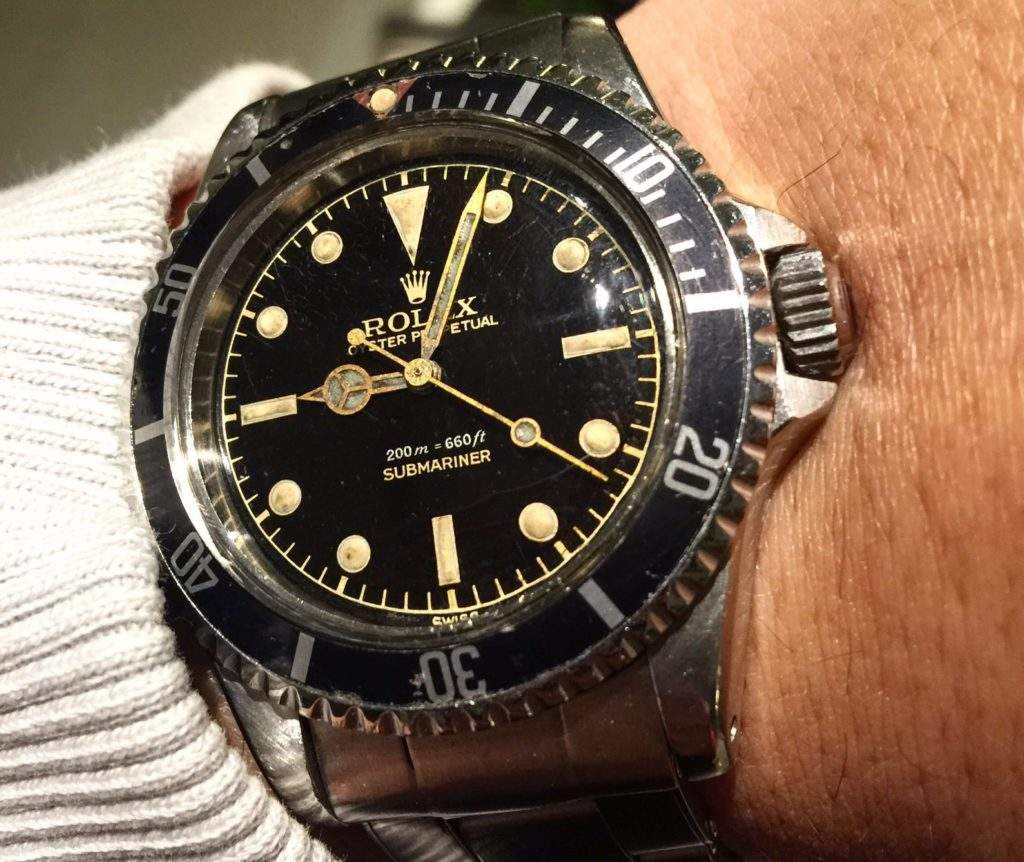
(Credit: Silas).
If you look at the crown guard more closely the Eagle beak looks more like the sail of a sailing boat sideways (see picture above) rather than the normal crown guards found on the 5512 like seen here.
Lets take a closer look at the Eagle beak from another view.
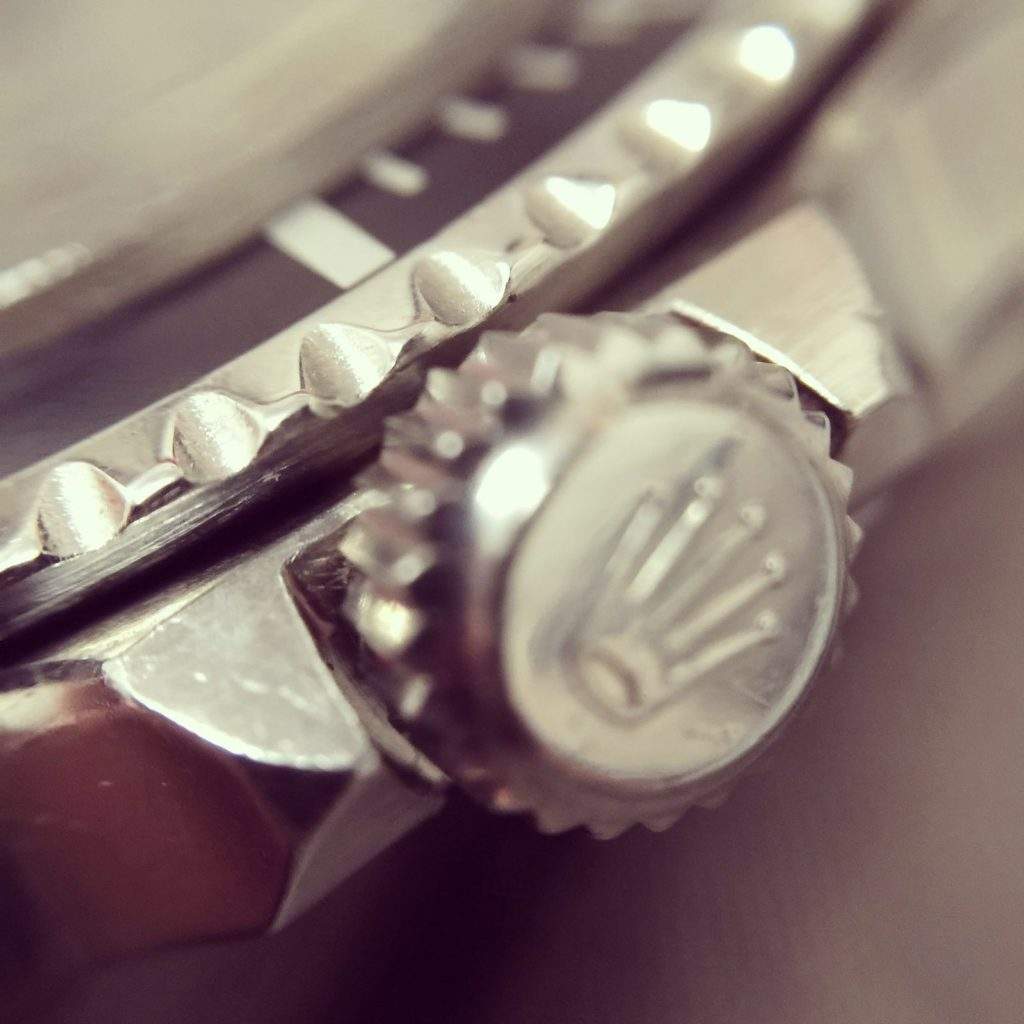
(Credit: Silas).
Another good view of the Eagle beak comes from owner Geoffrey Hess. The ‘sail’ type shape is very apparent here. Here the difference from an Eagle beak and a normal 5512 are very obvious.
Same watch as above but from an angle further away.
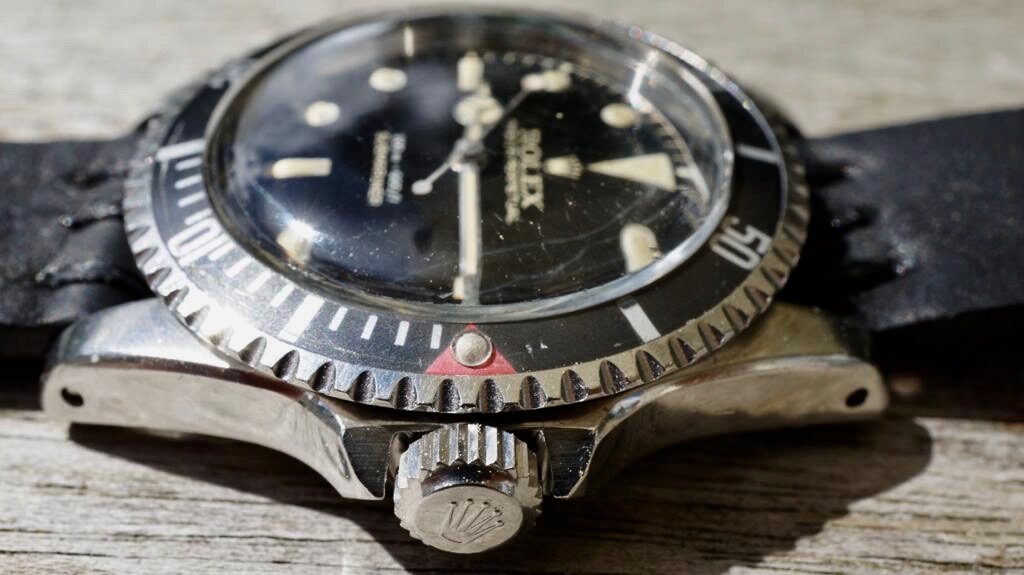
(Credit: Rare & Fine).
The Eagle beak barely has any steel or mass where the two parts of the ‘sails’ meet.
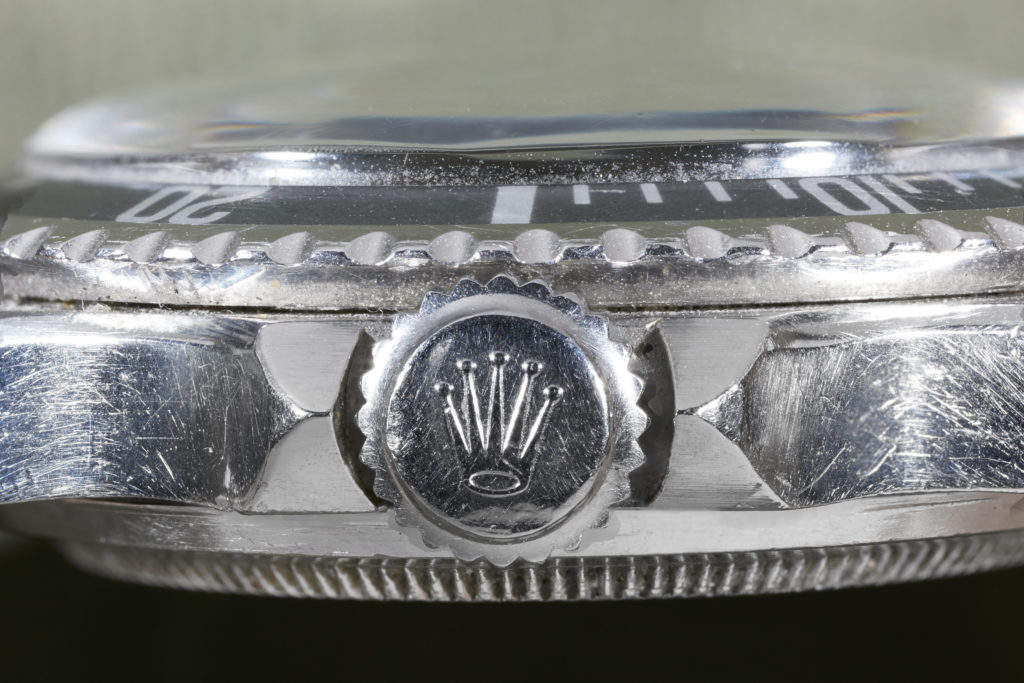
The difference from an Eagle beak and a normal 5512 are now becoming obvious. The Eagle beak above and the normal pointed crown guard 5512 below.
On a normal 5512 submariner the space where the two parts meet is much larger and almost square or rectangular in form see picture below.
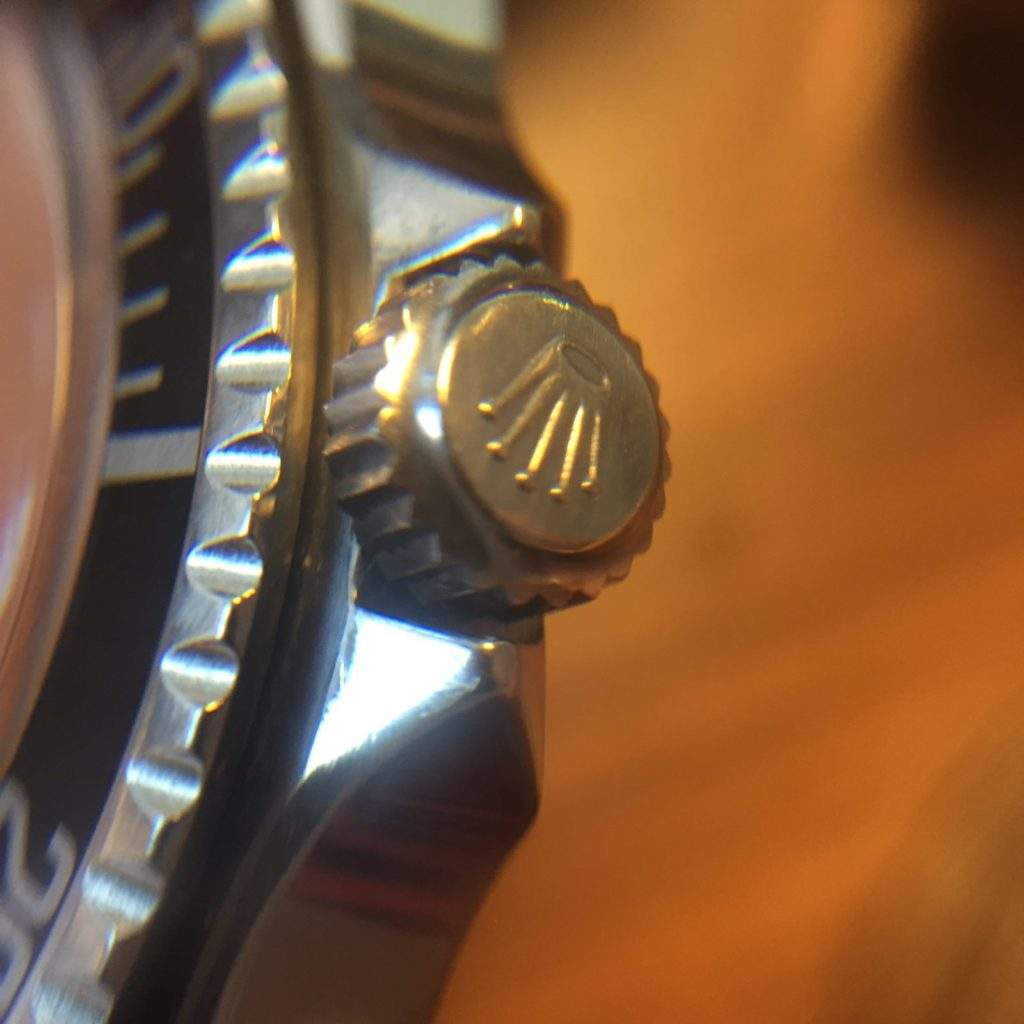
(Credit: Fabrice)
The square part on a normal pointed crown guard 5512 might be even more obvious in the next picture. Yes it is these details that count in the Rolex world. As small as they may be.
The devil is in the detail. Below a pointed crown guard 5512 that has nothing to do with an Eagle beak.
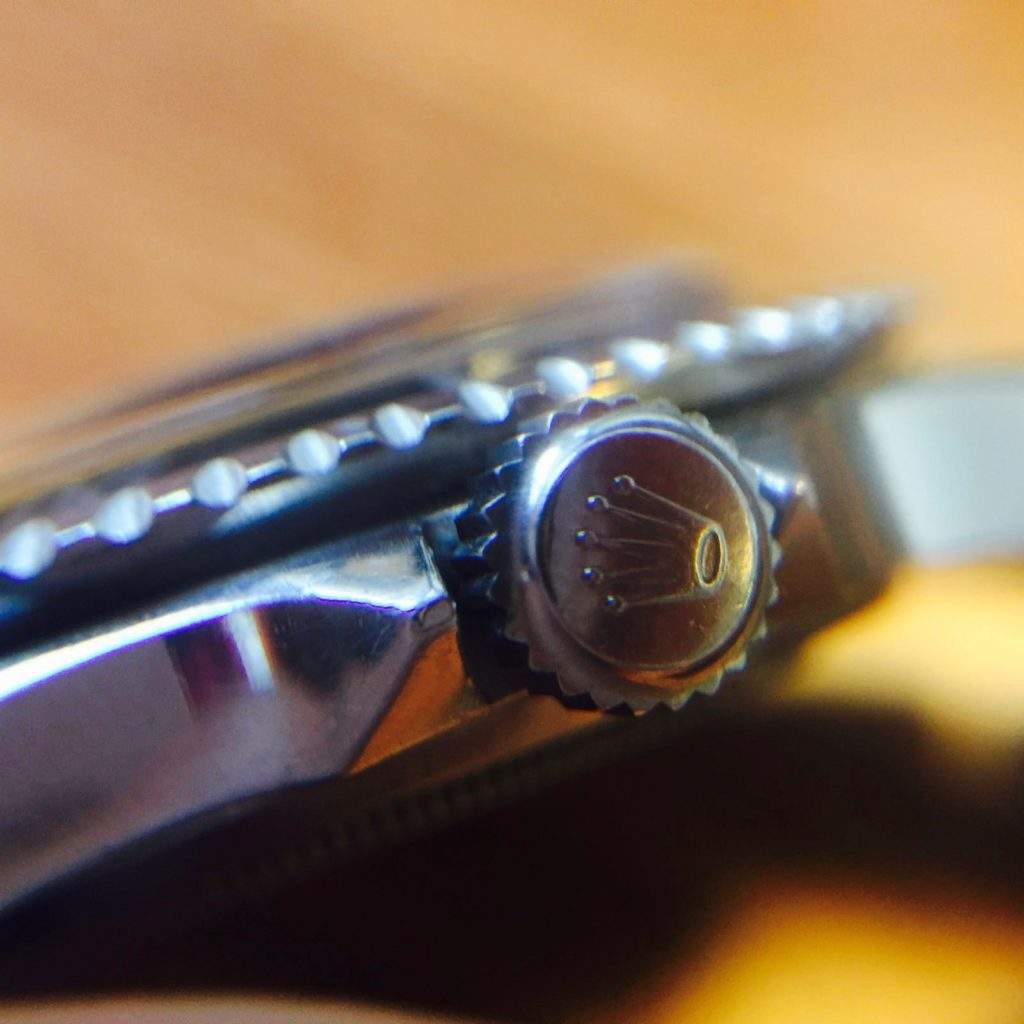
The shape of the Eagle beak 5512 can rightly be compared to very early 1675 GMT masters from Rolex in shape.
This is presumably why the auction house termed the pointed crown guards 1675 GMT as ‘Eagle beak’ even though I have never heard this before and among the Rolex community the term Eagle Beak is reserved for the 5512 Submariner exclusively. Lets take a look at an early 1675 GMT Master and its pointed crown guards.
The watch below is a very early 1675 with serial Number 500 xxx from 1959 (around the time the first 1675s were made).
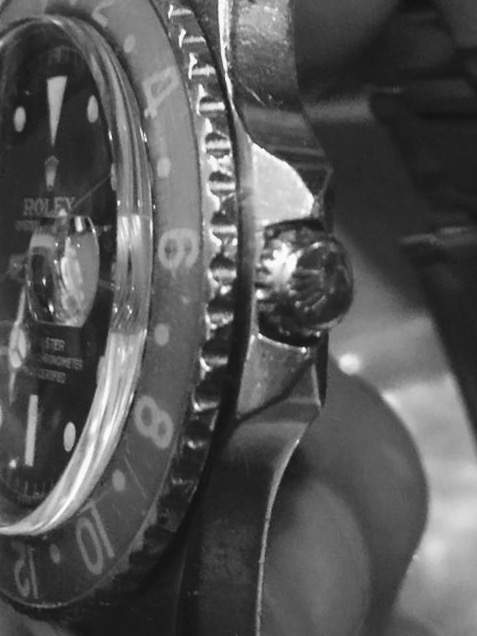
Notice the pointed crown guards and the typical ‘sail type pattern seen again. It does look similar to an Eagle Beak but it is not one. There is too much material on where the two points meet of each crown guard for it to be an Eagle beak. See picture above. Lets take a look at another picture of the same watch. Below you can see the similarities even better.
There is no doubt a very clear resemblance to the Eagle beak 5512 Submariner. But if you look closely the differences are noticeable even if only very slightly.
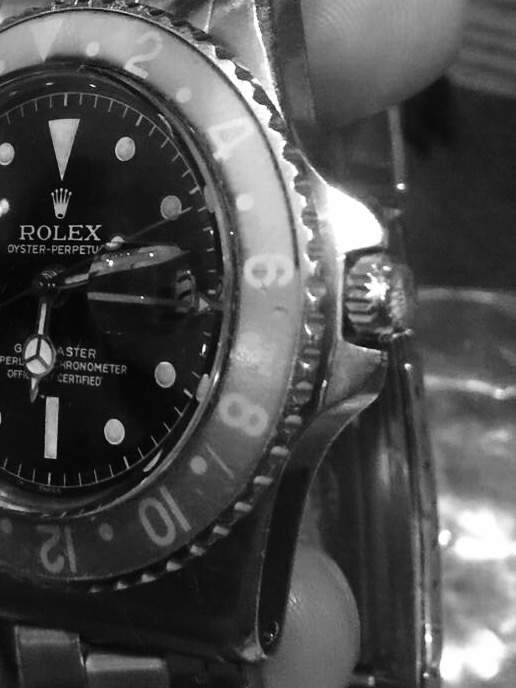
However when an auction house decided to call another early 1675 GMT Master with 6xxx xxx serial number Eagle beak – that caught my attention and was the reason for me writing this post to begin with.
If we look at the watch they chose however it only slowly becomes obvious that it is technically incorrect to give the watch such a description.
The example is a nice early 1675 pointed crown guards but it does not qualify as an Eagle beak. The differences are noticeable if you look at the details. Look at the pictures below.
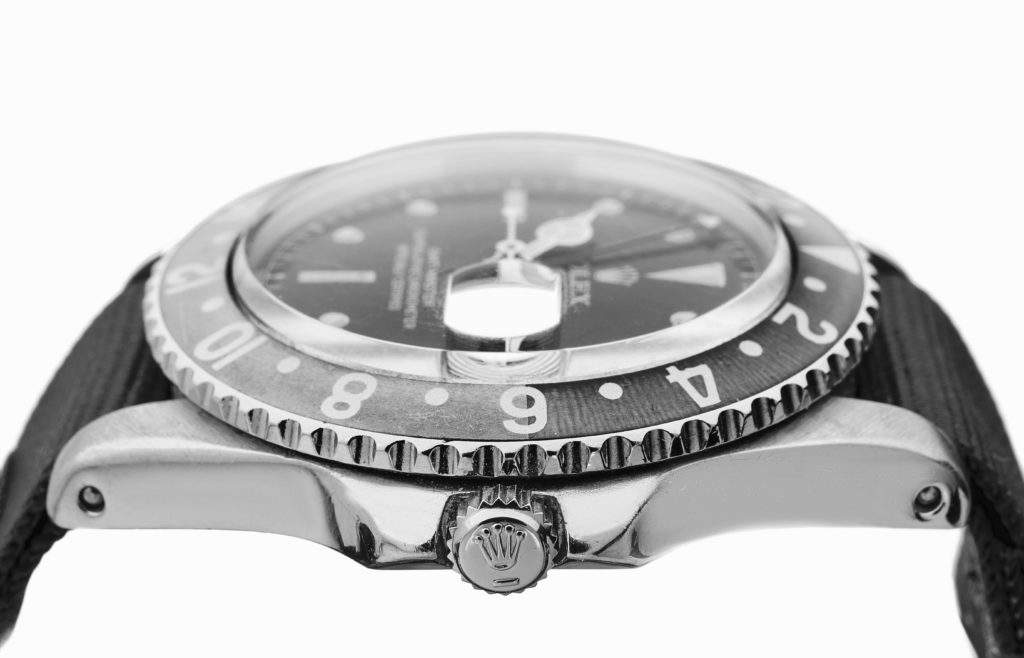
The front of the pointed crown guards give a good indication of why this is not a Eagle beak. If you compare this picture to the picture below of an Eagle beak crown guards it becomes obvious.

However from the side they are quite similar and this beak or sail pattern can be seen in the 1675 GMT. Just look below. Only very early 1675 GMTs seem to have this particular pointed crown guards that do resemble an Eagle beak. BUT the Eagle beak is more pointed towards the end.
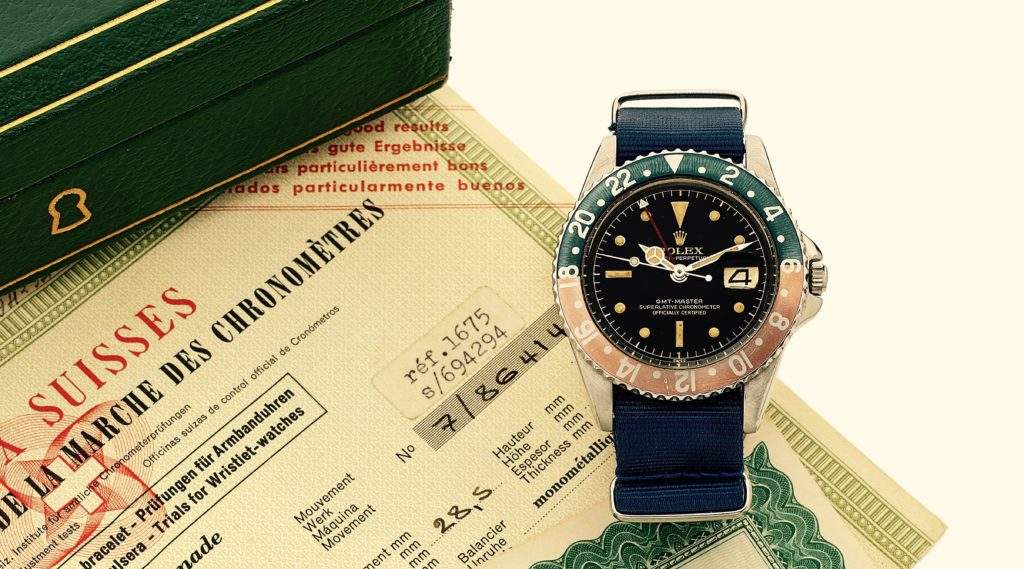
Concluding remarks
In the end of 1950s and early 1960s the first crown guards for Rolex sports watches came out to better protect the crown.
The first sub to carry them was the 5512 first in square form, then in Eagle beak form, and lastly the normal pointed form. In the GMT Master world it was the reference 1675 that was the first to carry crown guards. The first generation pointed crown guards 1675 indeed looked like an Eagle beak (see picture above). However looking at the watch from multiple angles it becomes clear that the Eagle beak is different. It is more pointed.
I also was not aware of the details of an Eagle beak. And how it differed to normal pointed crown guard. The square crown guard, was more obvious, as the name implies (it is square) but it still is interesting to compare the square/pointed/eagle beak and early 1675 GMT Master crown guards.
Only when an auction house termed a GMT master 1675 Eagle beak did it catch my attention, as I knew Eagle beak was reserved for the 5512 submariner only. But the similarities are there. The very first 1675 GMT Master have a pointed crown guard that strongly resembles a Eagle beak.
Once again only looking closely at the details with the aid of pictures do we learn that they are different.
And in the vintage Rolex world, details are everything.
(Special thank you to Silas, Geoff Hess and King Jim for the pictures and information delivered).
Let us look at some more pictures of the elusive and rare Eagle beak. Below a tropical version with correct 478 xx4 Serial Number.
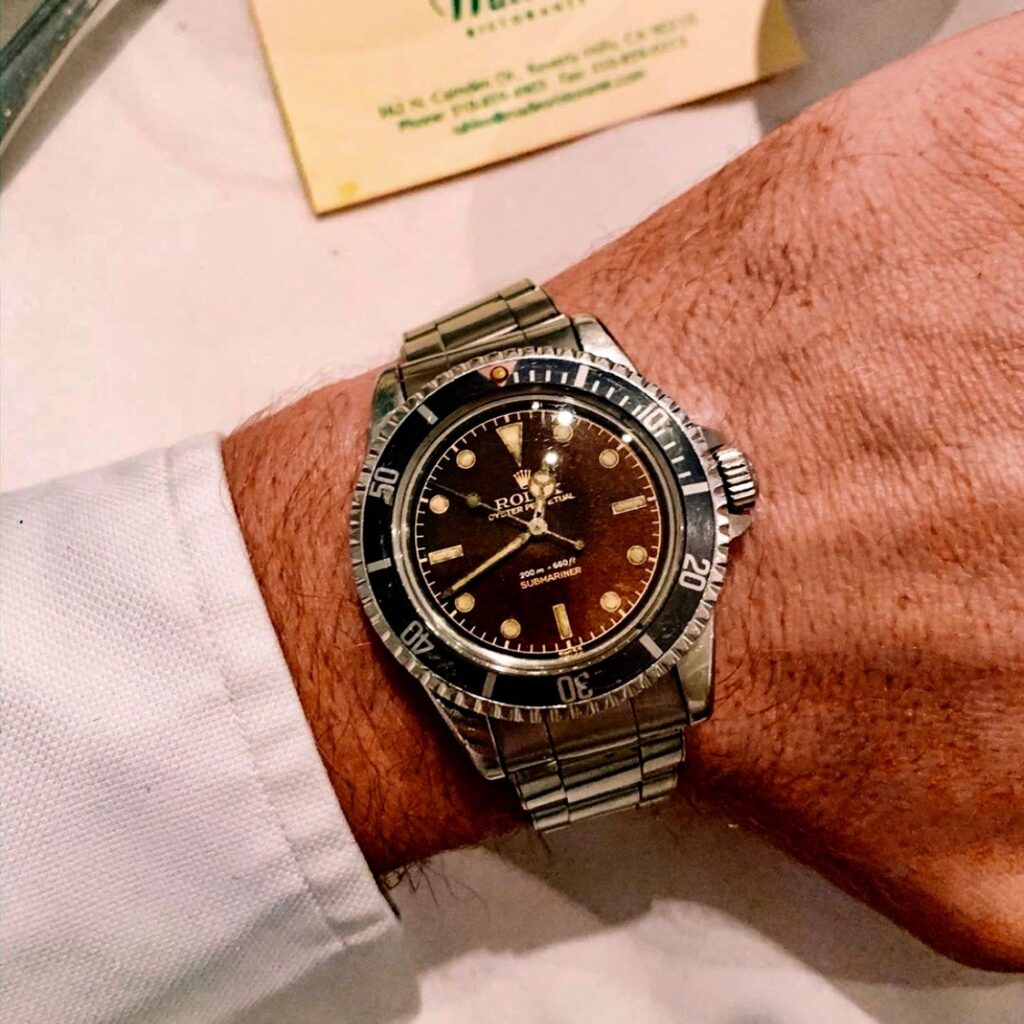
Below the main watch of the report. A fantastic Eagle beak owned by an Asian collector.

(Credit: Rare & Fine).
From another point of view.
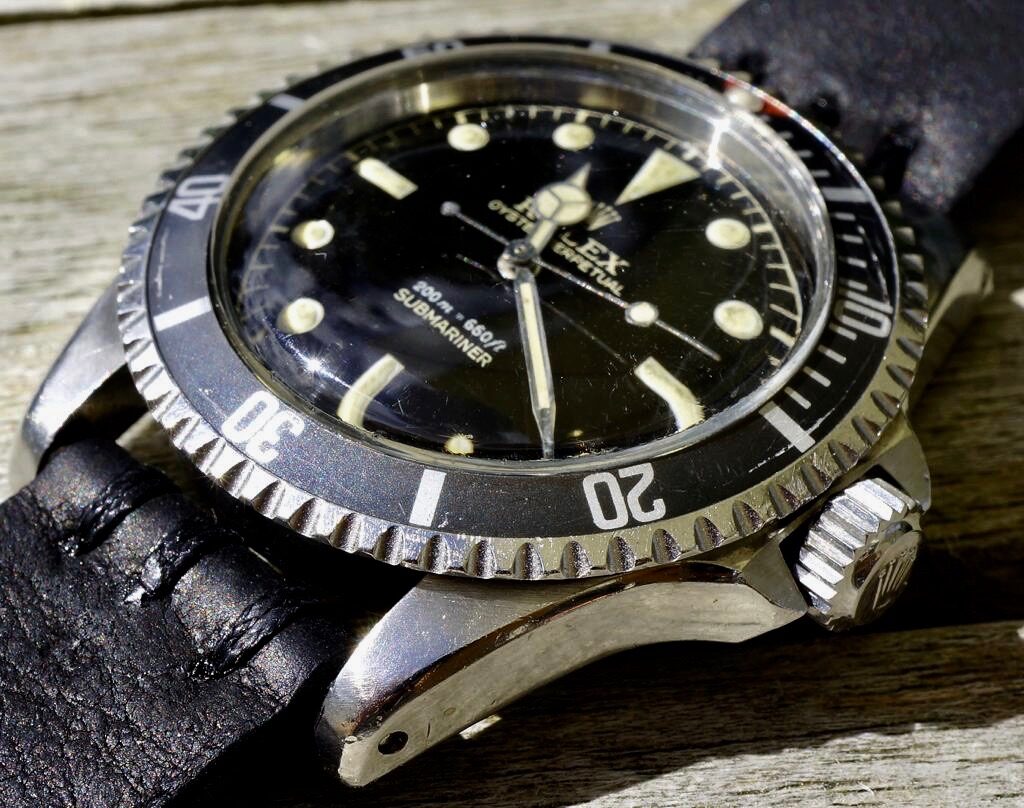
And the last picture from another angle.
